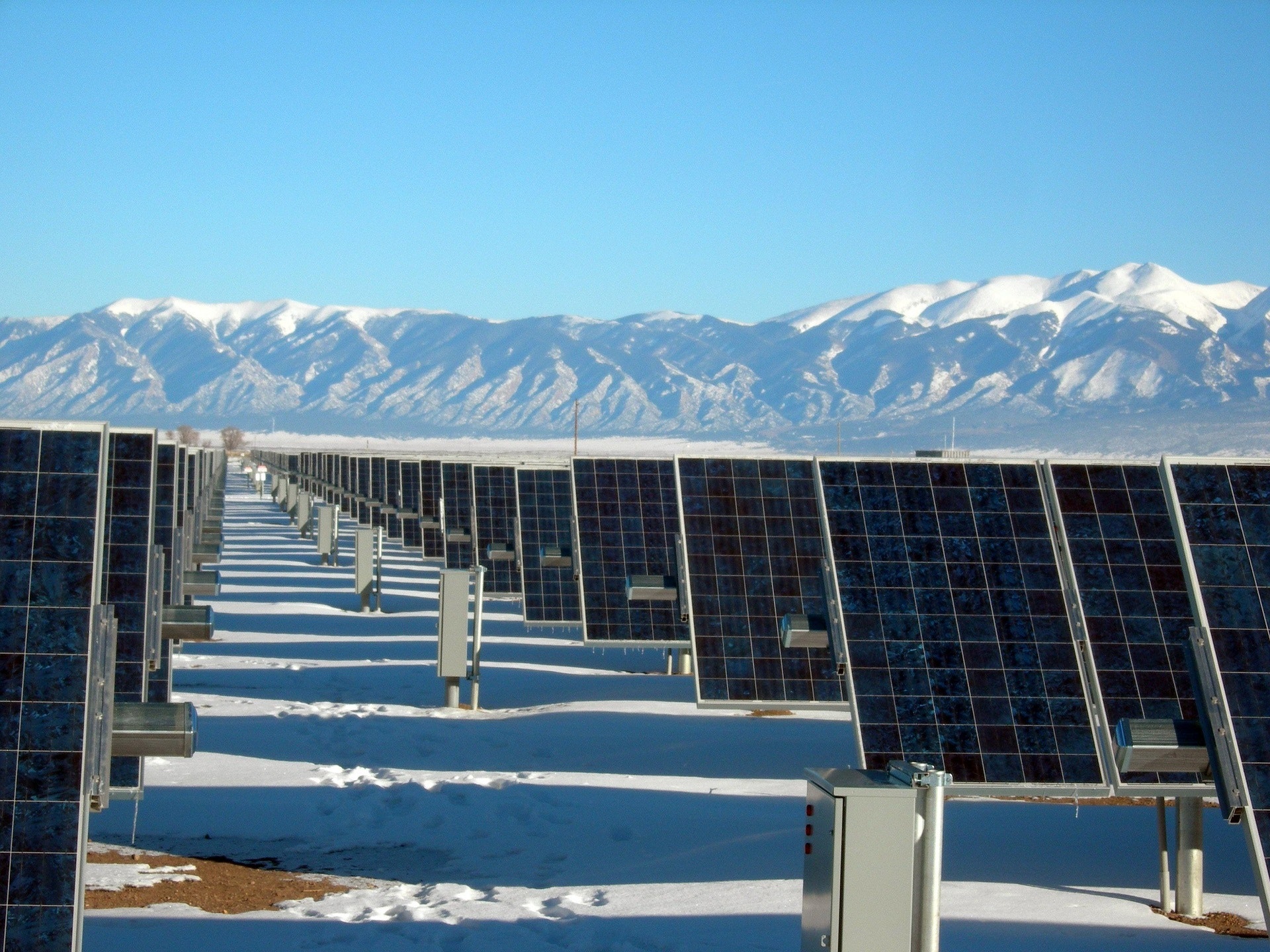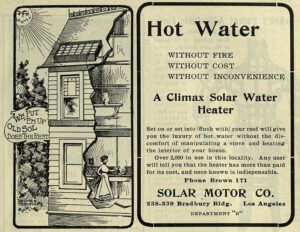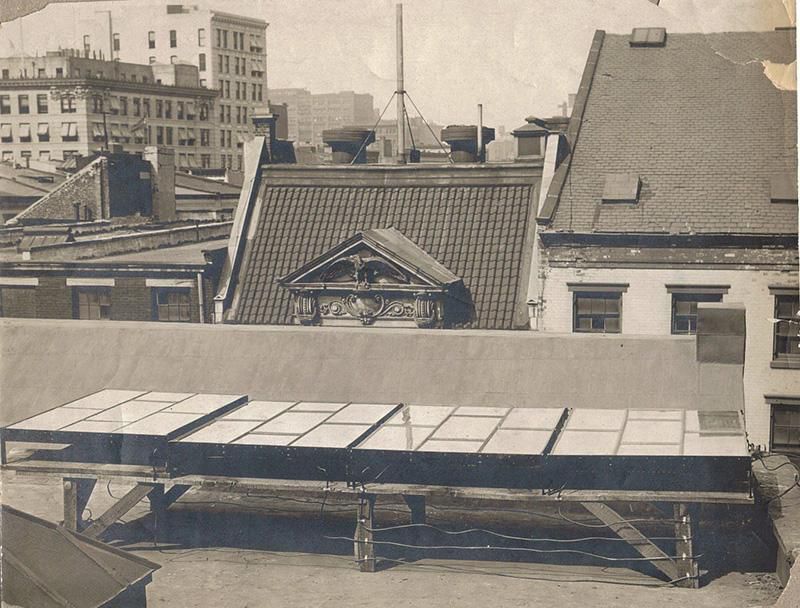Get in touch with us for the best quality continuing education materials
Customer satisfaction and providing high quality content is our highest priority. Please let us know how we can improve your experience in any way.


The history of harvesting energy from the sun goes back more than most people know. Many historical references are made to other uses of the sun such as time keeping, fire starting, food dehydration. This discussion will be limited to passive solar space heating and cooling, solar water heating and solar electricity production from an historical perspective. Archaeology and historical documents indicate that ancient Roman, Greek and Chinese cultures incorporated solar concepts into city planning and architecture.
In the 5th century AD Socrates said the following about passive solar design “Supposing a house to have a southern aspect, sunshine during winter will steal in under the verandah, but in summer, when the sun traverses a path right over our heads, the roof will afford an agreeable shade, will it not?”. Records of a lawsuit related to passive solar design in a Roman court about 200 AD found that a citizen had the right to access to the sun and one neighbor could not block the sun from shining on another’s home. About 212 AD the Roman Bath at Caracalla incorporated a passive solar design with large south facing windows with glass to supplement the wood fired heat for the baths as wood resources were became scarce in the area. The Justinian code of law guaranteed in 600 AD sun access rights to Roman citizens. The Anasazi Native Americans constructed cliff dwellings near what is now the Four Corners area of Colorado between 1000 and 1100 AD. The cliff dwellings are shaded from the sun by the cliffs in summer and warmed by the low angle of the sun in winter taking advantage of the unique passive solar aspects of the cliffs and the home sites. Passive solar design was largely abandoned in Europe after the fall of the Roman Empire but it continued in China. Passive solar design returned to Europe with solar houses built in the Ruhr area of Germany after WWI. Architects George F. Keck pioneered the design of passive solar houses in the US in the 1930s and 1940s. Frank Lloyd Wright incorporated passive solar design principles n some of his designs. The US Department of Energy estimates that over 300,000 buildings in the US have incorporated passive solar design since 1978.

Ancient Babylonian and Chinese texts refer to warming bath water by placing clay vessels in the sun. The first commercially produced solar water heater in the U.S. was patented in 1891. Within five years, about 30 percent of the homes in Pasadena, California, had solar domestic water heating systems installed. The solar water heating industry had spread to Florida by the 1930s and the peak number of residential solar water heating systems in the US was about 60,000 homes in 1940. Copper shortages during World War II (combined with economic incentives offered by electric companies to use electric water heaters) resulted in a sharp decline in the number of solar water heaters.
It would be almost about fifty years until solar water heating hit the mainstream market again, revitalized by the OPEC oil embargo and escalating fossil fuel prices. Federal and state tax credits of the early 1980s for renewable energy systems gave the solar industry a major, if short-lived, boost. Solar water heating would fall off again until a resurgence in the late 1990’s.
The photovoltaic effect was discovered in 1839 by French physicist Edmund Becquerel who found that certain minerals, especially Selenium, produced a small current when exposed to sunlight. Photovoltaic materials didn’t advance much beyond a novelty until the 1950’s when Bell Laboratories developed an approximately 4% efficient, silicon PV panel capable of powering household items. By the mid to late 1950’s satellites were solar powered. Controls and efficiency continue to improve and new applications, such as floating solar arrays, are developing.

500-200 BC – Romans, Greeks and Chinese use passive solar designs to warm living spaces in the winter.
200 BC – Roman public baths are supplemented w/ solar heated water.
200 AD – The right of a Roman property owner to prevent the sun from being blocked by a neighbor is upheld by a Roman court.
600 AD – Sun access rights of Roman property owners are guaranteed in the Justinian Code of Law.
476 AD – The fall of the Roman Empire ushers in a dark age in passive solar design in the western world that would last 1500 years.
1000 to 1100 AD – Anasazi people construct cliff dwellings near present day Four Corners, Utah which are oriented so that the dwellings are shaded in summer and warmed by the sun in winter.
1839 – French physicist Edmond Becquerel discovers the photovoltaic effect, which is that certain materials, especially Selenium, would produce a small current when exposed to sunlight.
1870’s – Heinrich Hertz advanced the study of the PV effect which led to the development of selenium PV cells which could convert light to electricity at about 1-2% efficiency.
1883 – New York inventor Charles Fritts installs the first PV cell on the roof of a building, making it the first PV cell installed in the US.
1891 – First Patent for Solar Water Heater issued by US Patent Office
1896 – 30% of Homes in Pasadena, CA used solar water heaters, most manufactured by the Climax Solar Water Heater Company.
1920s – Modern architects reintroduce passive solar heating and lighting of living spaces in modern western architecture.
1940 – 60,000 homes in the US use solar water heaters derived from the Climax heaters
1945 – US Solar water heater manufacturers endure WWII without copper tubing (key component). Momentum of the US solar water heater movement continues to decline.
Post WWII – Electric utility companies offer incentives to install electric water heaters, and most US solar water heater manufacturers go out of business.
1954 – Bell Laboratories develops the first PV panel capable of powering some everyday electrical equipment.
Late 1950s – Space programs use solar PVs to power satellites. The technology was still too expensive for terrestrial use.
1970s – The global energy crisis combined with advancements in semiconductor technology and improved PV efficiency made solar PVs a viable power source for some small electronics.
1982 – The first “Utility Scale” 1 MW solar (park, farm, power station) was built by Arco Solar, near Hesperia, CA.
2011 – MIRARCO (Mining Innovation Rehabilitation and Applied Research Corporation Ontario, Canada) develops the first known floating solar array built with terrestrial equipment mounted on pontoons and rafts.
2014 – SwimSol constructs the first utility scale floating photovoltaic (FPV) system, in the Maldives.
2018 – World Bank reports that worldwide electricity production from floating solar is about 750 MW.
2021 – Commercially available solar PVs achieve efficiencies over 20%. Worldwide solar water heating production estimated by Statista to be about 482 GW, with China accounting for about 70% or 337 GW.
2022 – Space-based testing of PV panels is scheduled as part of the Space Solar Power Project
Charles Fritts installed the first solar panels on New York City rooftop in 1884. (Courtesy of John Perlin)

Customer satisfaction and providing high quality content is our highest priority. Please let us know how we can improve your experience in any way.